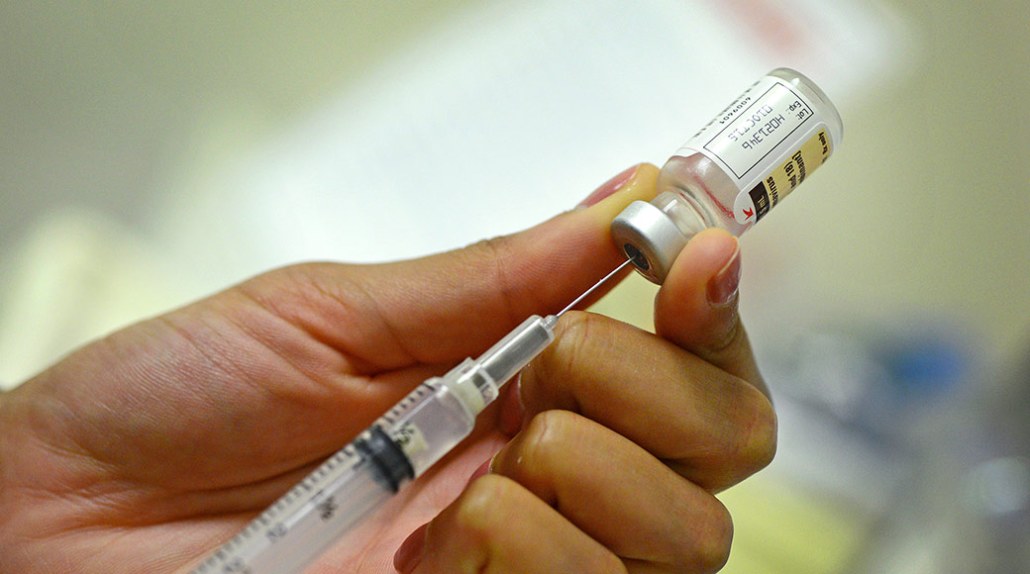The U.S. narrowly eked out a measles win, keeping elimination status
International travelers may still import the virus, but a nearly yearlong outbreak is over

Most of the measles cases in 2019 occurred in people who were not vaccinated or did not know whether they had been. Around 95 percent of a community must be vaccinated against measles to prevent an outbreak.
Airman 1st Class Matthew Lotz/U.S. Air Force
- More than 2 years ago
Just in the nick of time, a nearly yearlong measles outbreak that threatened to strip the United States of a major public health achievement decades in the making has ended. The U.S. Centers for Disease Control and Prevention announced on October 4 that the United States has maintained its measles elimination status, first gained in 2000.
“We are very pleased that the measles outbreak has ended in New York and that measles is still considered eliminated in the United States,” said U.S. Health and Human Services Secretary Alex Azar in a statement. “But this past year’s outbreak was an alarming reminder about the dangers of vaccine hesitancy and misinformation.”
Had the New York state outbreak not been resolved by October 2, the United States would have lost its status as a country that has eliminated measles, primarily putting those not vaccinated at risk from homegrown measles cases. It would have also raised concerns for other countries working to eliminate measles, says Walter Orenstein, a vaccinologist at Emory University School of Medicine in Atlanta. “If we can’t do it, how can they?” Measles has recently reestablished itself in several countries where it had previously been eliminated, including the United Kingdom.
If there are no endemic cases for at least a year, measles is considered eliminated. That means the virus is not continually spreading within an area.
But cases can still occur when international travelers get sick abroad and bring measles back. “Increased global measles activity and existence of undervaccinated communities place the United States at continual risk for measles cases and outbreaks,” researchers warn in a CDC report on measles cases in 2019 published online October 4 in Morbidity and Mortality Weekly Report.
For the United States, keeping its measles status is both a relief and a warning call, says Orenstein, who was the director of the U.S. immunization program when the country first gained elimination status in 2000. “As we’ve seen in New York state, there are subpopulations with low [vaccination] coverage capable of sustaining [measles] transmission,” he says. There needs to be a renewed focus on keeping levels of vaccination uniformly high throughout the country, he says.
The New York state outbreak began in Rockland County on October 1, 2018, and spread to neighboring counties. Rockland County announced its outbreak had ended on September 25 (SN: 9/25/19), and New York State Department of Health Commissioner Howard Zucker released a statement on October 3 that the New York state outbreak was over. A measles outbreak can be declared finished 42 days after the date that the last person with measles developed a rash. The last case in New York state occurred on August 19.
The New York state outbreak as well as one in New York City, both of which began towards the end of 2018, were a harbinger of what was to come in 2019. From January 1 to October 1, there were 1,249 cases of measles in 31 states — and a total of 22 outbreaks. Of those sickened, 119 people required hospitalization, 60 developed pneumonia and one person had encephalitis, a dangerous swelling of the brain. No one has died of measles to date in 2019.
The tally of measles cases from 2019 is the largest reported in a year since 1992. Nearly 90 percent, or 1,107, occurred in people who had not been vaccinated or did not know their vaccination status (SN: 4/29/19).
Measles is highly contagious. To fend off outbreaks, about 95 percent of a population needs to be vaccinated against the virus (SN: 4/15/19). That provides a level of “herd immunity” that protects infants too young to be vaccinated and those who can’t be vaccinated due to medical conditions.
Ongoing measles outbreaks around the world mean that the virus is likely to continue to be brought into the United States (SN: 5/21/19). That poses a particular risk to areas with low vaccination coverage, often due to vaccine hesitancy (SN: 5/21/19).
“Most of today’s parents and many of our young physicians have never seen measles,” and so there are those who don’t see the benefits of the vaccine, Orenstein says. But “we don’t want to get to the point that we need to have big outbreaks of measles ongoing to sell them on the importance.”







